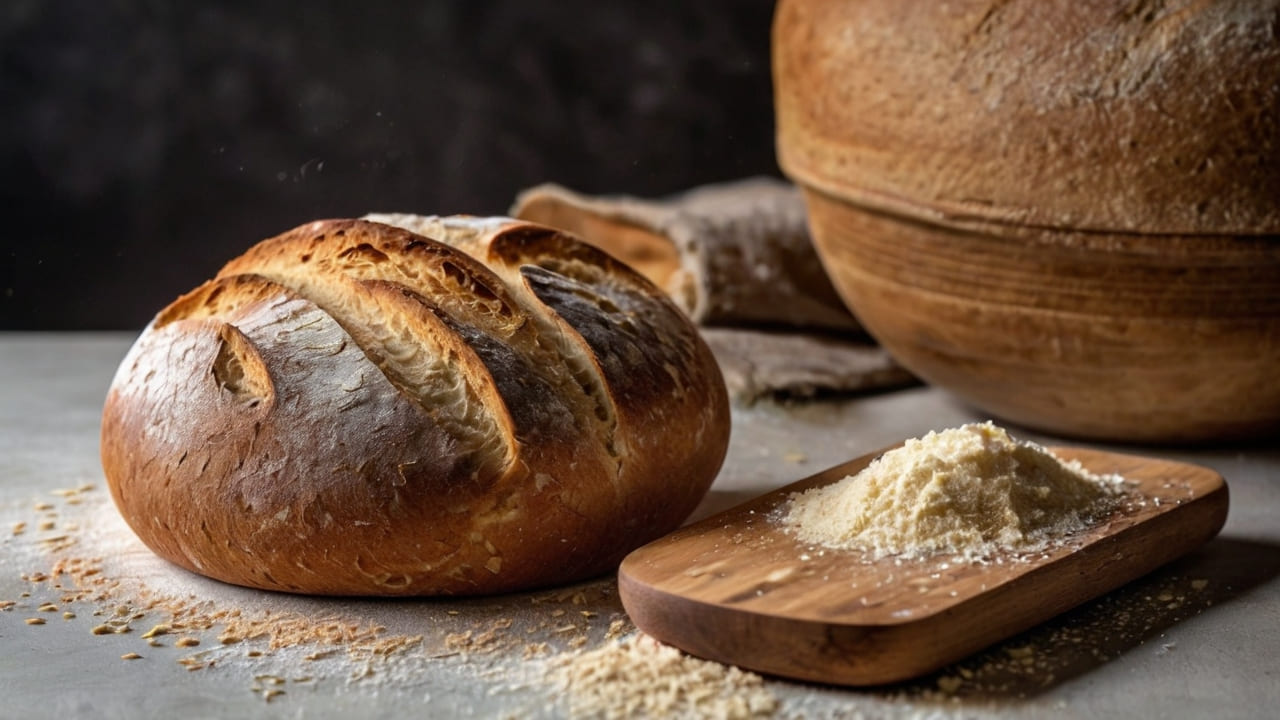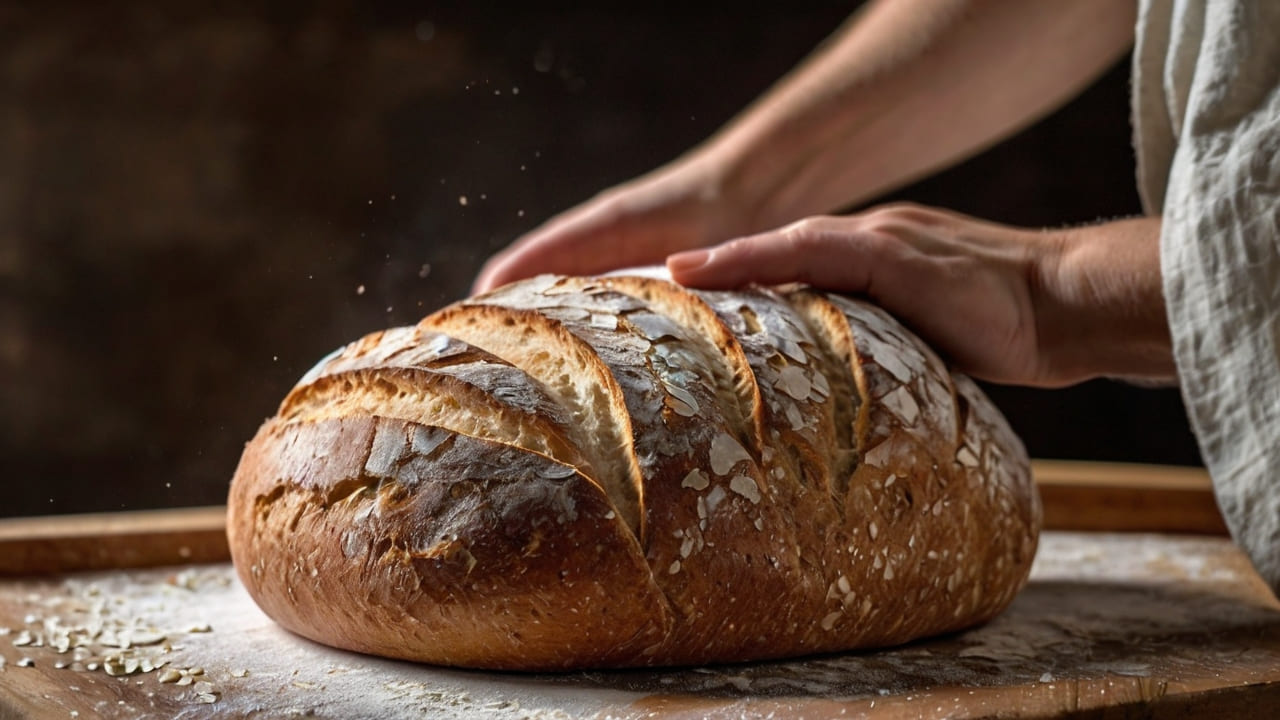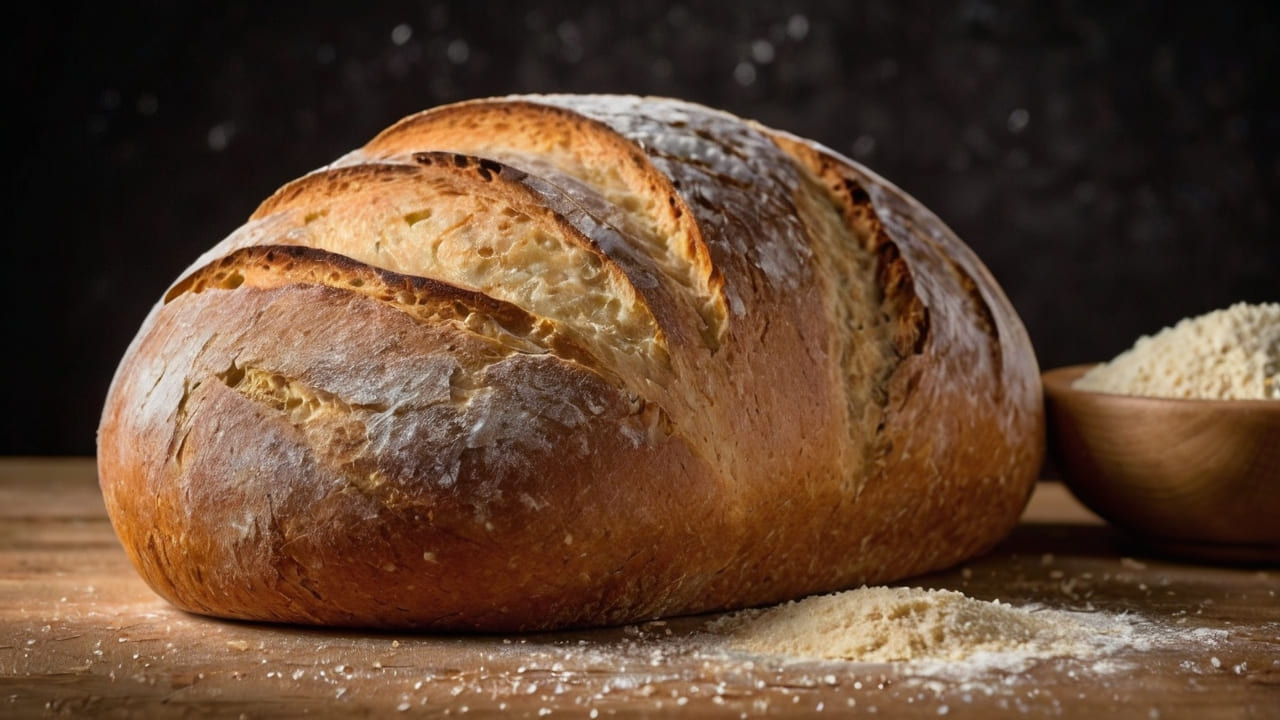
What is Used to Make Bread Soft and Fluffy? | Expert Guide
Key Ingredients that Make Bread Soft and Fluffy

When it comes to making bread soft and fluffy, the ingredients you choose play a crucial role. Each component interacts in specific ways to create that perfect loaf. Let's dive into the key ingredients that contribute to a soft and fluffy texture.
Role of Yeast in Creating Fluffiness
Yeast is the magic behind that airy, tender crumb we all love in bread. By fermenting the dough, yeast produces carbon dioxide, which gets trapped in the gluten network, causing the dough to rise. This is what gives bread its light and fluffy texture. Yeast fermentation also adds depth of flavor, making the bread more complex and satisfying.
There are different types of yeast, and each one affects the bread's texture differently. For instance, fresh yeast tends to produce a finer crumb compared to dry yeast. Understanding how to handle yeast properly can make a significant difference in your bread’s final texture. Renowned baker Peter Reinhart has extensively covered the importance of yeast and its proper use in his influential book, The Bread Baker's Apprentice, offering invaluable insights for both novice and experienced bakers.
The Importance of Water Hydration in Dough
Water is another essential ingredient in bread making. The level of hydration in the dough directly influences the bread's texture. When you add water to flour, it helps to form gluten, the protein that gives bread its structure. The more water you use, the softer and more pliable the dough becomes, leading to a fluffier bread.
Proper hydration is crucial because too little water will result in a dense loaf, while too much can make the dough too sticky to handle. Achieving the right balance is key to perfecting your bread.
Sugar's Role in Soft Bread
Sugar is not just for sweetness; it plays a vital role in the softness of bread. Sugar feeds the yeast, which in turn speeds up the fermentation process, resulting in a lighter loaf. It also helps retain moisture, which keeps the bread soft for longer periods.
Balancing the sugar content is important because too much sugar can weigh down the dough, making it too sweet and dense. Just the right amount will enhance the softness without overpowering the other flavors.
Fat Content and Its Impact on Bread Texture
Fats like butter and oil are often added to bread dough to improve its texture. These fats coat the gluten strands, which slows down the gluten development and results in a softer crumb. Butter in particular adds richness and moisture, contributing to the bread's tender texture.
Using different types of fats can affect the bread in various ways. For instance, using oil might result in a more tender crumb, while butter adds flavor and richness. Understanding the role of fat in your dough can help you tweak recipes to achieve the perfect softness. Julia Child, the iconic chef, often highlighted the importance of butter in her French bread recipes, emphasizing how this ingredient contributes to a moist and tender loaf.
Techniques to Achieve a Soft and Fluffy Bread Texture

Beyond ingredients, the techniques you use in bread making are just as important in achieving that coveted soft and fluffy texture. Let’s explore some key methods.
Proper Kneading Techniques
Kneading is essential for developing the gluten network that traps air bubbles during fermentation. The way you knead the dough affects its texture. Proper kneading techniques involve stretching and folding the dough, which aligns the gluten strands and strengthens the dough.
Over-kneading can make the bread tough, while under-kneading can result in a dense loaf. Knowing when your dough has been kneaded enough—typically when it becomes smooth and elastic—is crucial for soft and fluffy bread.
Importance of the Proofing Process
Proofing is the process of letting the dough rise before baking, and it has a significant impact on the bread's texture. During proofing, the yeast produces gas, which gets trapped in the gluten network, causing the dough to expand. Proper proofing is essential for light, airy bread.
If the dough is under-proofed, it won’t rise enough, resulting in dense bread. On the other hand, over-proofing can cause the dough to collapse, leading to a flat loaf. Timing and environment are key—proofing in a warm, draft-free area usually yields the best results.
Baking Temperature and Timing
The baking process sets the final structure of the bread. The right temperature and timing are crucial in ensuring the bread bakes evenly and retains its soft texture. Baking at too high a temperature can cause the crust to form too quickly, trapping moisture inside and leading to a dense interior. Conversely, baking at too low a temperature may result in an undercooked center.
The goal is to find the right balance, typically baking at around 350°F (175°C) for a standard loaf, to ensure the bread is baked through with a soft, tender crumb and a golden crust.
Additives and Enhancers to Improve Bread Softness

In addition to basic ingredients, there are various additives and enhancers you can use to improve the softness of your bread.
Common Dough Conditioners and Their Effects
Dough conditioners like ascorbic acid and lecithin are commonly used in commercial baking to improve dough strength and texture. These conditioners work by strengthening the gluten network, making the dough more elastic and easier to work with, which in turn results in a softer bread.
Ascorbic acid, also known as Vitamin C, acts as a natural preservative, helping to extend the bread’s shelf life while keeping it soft. When using these conditioners, it's essential to follow the recommended amounts to avoid altering the flavor of the bread.
Natural Ingredients that Enhance Softness
For those who prefer natural ingredients, items like milk, eggs, and butter can significantly enhance the softness of bread. Milk adds moisture and a creamy texture, while eggs contribute to the richness and overall softness. Butter not only adds flavor but also helps to soften the crumb.
These natural ingredients are excellent alternatives to commercial conditioners, especially if you prefer to keep your bread-making process as natural as possible.
The Role of Enzymes in Dough Softening
Enzymes, such as amylase, are naturally occurring in flour and help break down starches into sugars, which yeast can then feed on. This process not only improves the flavor of the bread but also contributes to a softer texture. Enzymes are often added in the form of malted barley flour or other enzyme-rich ingredients to enhance the softness of the dough.
Incorporating enzymes into your bread recipes can be a bit tricky, as too much can lead to overly sticky dough. However, when used correctly, they can make a noticeable difference in the final product.
Common Mistakes to Avoid When Making Soft Bread
Even with the right ingredients and techniques, there are common pitfalls that can prevent you from achieving the perfect loaf.
Overproofing and Underproofing Issues
Proofing can make or break your bread. Overproofing occurs when the dough is left to rise for too long, causing the gluten to weaken and the dough to collapse. Underproofing, on the other hand, means the dough hasn’t risen enough, leading to a dense, heavy loaf.
To avoid these issues, it’s important to monitor the dough closely during proofing. A good rule of thumb is to proof until the dough has doubled in size and springs back slightly when pressed with a finger.
Mismanaging Dough Hydration Levels
Achieving the right hydration level is critical for a soft and fluffy bread texture. Too little water in the dough results in a dry, crumbly texture, while too much water makes the dough too sticky to handle and can lead to a dense loaf.
Adjust the water content based on the type of flour you’re using and the environmental conditions, such as humidity, to ensure the dough is neither too wet nor too dry.
Incorrect Baking Temperature
The baking temperature must be carefully managed to achieve a soft interior with a golden crust. Baking at too high a temperature can cause the crust to harden too quickly, trapping moisture inside and leading to a dense crumb. Baking at too low a temperature can result in an undercooked interior.
To achieve the best results, preheat your oven and bake the bread at the recommended temperature for your specific recipe. This ensures that the bread bakes evenly, with a soft, tender crumb and a perfect crust.
Frequently Asked Questions About Making Soft and Fluffy Bread
To wrap up this guide, let’s address some of the most common questions people have about making soft and fluffy bread:
-
What are the best ingredients to use for soft bread?
- Answer: The best ingredients include yeast, water, butter, and sugar, each contributing to the bread’s softness in different ways.
-
How can I tell if my dough is kneaded enough?
- Answer: Properly kneaded dough will be smooth, elastic, and will pass the “windowpane test” where a small piece can be stretched without tearing.
-
Can I substitute butter for other fats to achieve soft bread?
- Answer: Yes, you can substitute butter with oils or margarine, though the flavor and texture may vary slightly.
-
What are the signs that my bread is proofed correctly?
- Answer: Properly proofed dough will have doubled in size and will spring back slightly when pressed with a finger.
-
How do additives like ascorbic acid improve bread texture?
- Answer: Ascorbic acid acts as a dough conditioner, strengthening the gluten network and resulting in a softer, more elastic dough.
Final Thoughts
Making bread soft and fluffy requires attention to detail, from selecting the right ingredients to mastering key techniques like kneading and proofing. By following these guidelines and avoiding common mistakes, you can consistently bake delicious, soft bread that rivals your favorite bakery.
For those looking to perfect their bread-making skills, I highly recommend visiting Bestbreadmaker.store, where you can find top-quality bread makers and resources that will help you achieve professional results at home. Peter Reinhart, a renowned bread-making expert, and Julia Child, the iconic chef, have both shared invaluable insights into the art of bread making, emphasizing the importance of ingredient selection and technique. By learning from these experts and applying their principles, you’ll be well on your way to mastering the art of making soft and fluffy bread.

